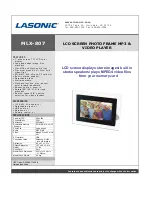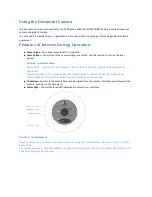
76
Shooting Options: The Shooting Menu
S
h
ooting, P
laybac
k and Se
tu
p Me
nus
B
White Balance
The color of light reflected from an object varies with the color of the light source.
The human brain is able to adapt to changes in the color of the light source, with
the result that white objects appear white whether seen in the shade, direct
sunlight, or under incandescent lighting. Digital cameras can mimic this
adjustment by processing images according to the color of the light source. This is
known as “white balance”.
Although the default setting,
Auto
can be used under most types of lighting, you
can apply the white balance setting suited to a particular light source to achieve
more accurate results.
The effects of the selected option can be previewed in the monitor. At settings
other than
Auto
, the icon for the current setting is displayed on the monitor (
A
8).
Set
A
(Auto) mode (
A
29)
M d
(shooting menu)
M
B
White Balance
a
Auto (default setting)
White balance automatically adjusted to suit lighting conditions. Best choice in
most situations.
b
Preset manual
Neutral-colored object used as reference to set white balance under unusual
lighting conditions. Please refer to “Preset Manual” for more information(
A
77).
c
Daylight
White balance adjusted for direct sunlight.
d
Incandescent
Use under incandescent lighting.
e
Fluorescent
Use under most types of fluorescent lighting.
f
Cloudy
Use when taking pictures under overcast skies.
g
Flash
Use with the flash mode.
B
White Balance
•
This feature cannot be used simultaneously with certain features.
➝
“Camera Settings that Cannot
Be Set at the Same Time” (
A
80)
•
At white-balance settings other than
Auto
or
Flash
, turn the flash off (
W
) (
A
30).
Summary of Contents for 26196
Page 1: ...En DIGITAL CAMERA User s Manual ...
Page 169: ......
Page 170: ...COOLPIX L22 L21 Nikon User s Manual CT9l OlI4 6MM1 J14N 01 ttl I I SI l ...
Page 173: ......















































